© ROOT-NATION.com - Use of content is permitted with a backlink.
Let’s imagine that you are going to buy a new flagship smartphone, but you want something unusual. Dull iPhones or boring Android phones – they all have the same face, and from behind they look like twins, so they no longer excite and inspire. And finally, you are lucky. Because currently, the market can offer the demanding buyer something amazing – a foldable smartphone!
Yes, I know this is barely a novelty for you and me – experts in the intricacies of modern technologies, who have been observing this trend for four years. However, it can be argued that sophisticated smartphones are just starting to catch the average consumer’s attention, mainly due to the gradual decrease in the cost of such devices.
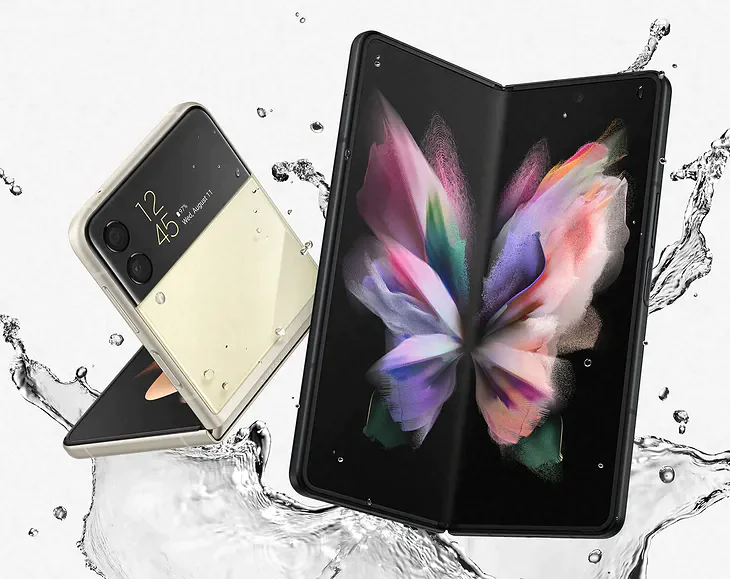
Why Is There Only Samsung in the Title?
In general, I want to compare the types of foldables, not specific smartphones of the Korean brand. So what do we have? On the one hand, Flip is a classic “flip phone”, that is, in essence, a regular smartphone that can be folded in half. On the other hand, the Fold is a thick brick phone with an additional external screen that can be used as a normal smartphone when folded but can be unfolded into a small thin tablet at any time.
The main point: the reference to specific models in my story will be purely conditional, I chose the two most popular folding smartphones on the market from the most famous manufacturer. In short – typical clickbait in the title, which I’m going to justify with useful (hopefully) content of the article.
All-in-all Samsung is the actual creator of the foldable smartphones segment, so you should give the company due respect. It also turned out that I have considerable experience with the foldable smartphones of this brand – Galaxy Fold 2, as well as Fold 3, the first Flip, and Flip 3, so I will use them for illustrations and examples in the process of my comparison.
What’s the Difference Between Flip & Fold?
So, what is the main difference between the Fold and the Flip? The first, as the advertising from my childhood, said (I don’t remember what was advertised there, but the phrase stuck in my mind), is “designed to give MORE”. Well, that is, it becomes larger when unfolded. And although such a feature in itself is meaningless, at the same time the screen of the device increases, which, in theory, improves its functionality. We will find out if this is true.
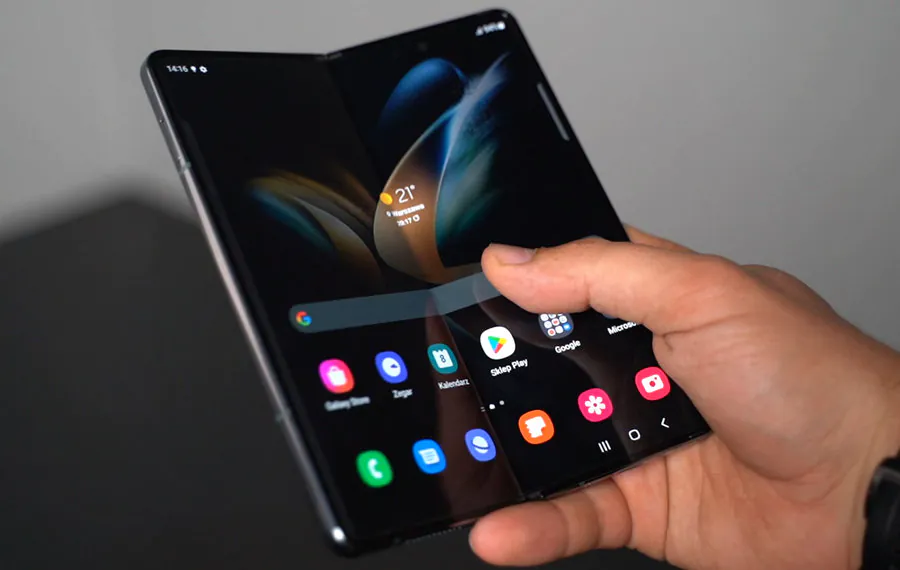
But in the first approximation, everything is logical. A smartphone with a small screen turns into a tablet with a large screen with a light movement of the hand. Well, “more” in the mind of any person almost always means “better”. Is this an advantage? At this stage, let’s assume that it is.

Intermediate conclusion about the first type of foldables: FOLDABLE smartphone, when unfolded gives you more than a standard brick.
Recommended reading:
- Samsung Galaxy Z Fold3 5G review: Addictive foldable smartphone
- Samsung Galaxy Z Fold2 review. Not a Concept Anymore
- OPPO Find N review and user experience
Flip is TOTALLY different. Because its usage model is very similar to a regular smartphone. Yes, there are inconspicuous features that still make it stand out – it folds in half and the screen is slightly elongated. But it does not directly give any noticeable advantages, so in operation, it is still an ordinary smartphone with all the consequences. You will not get a new and better experience from it.
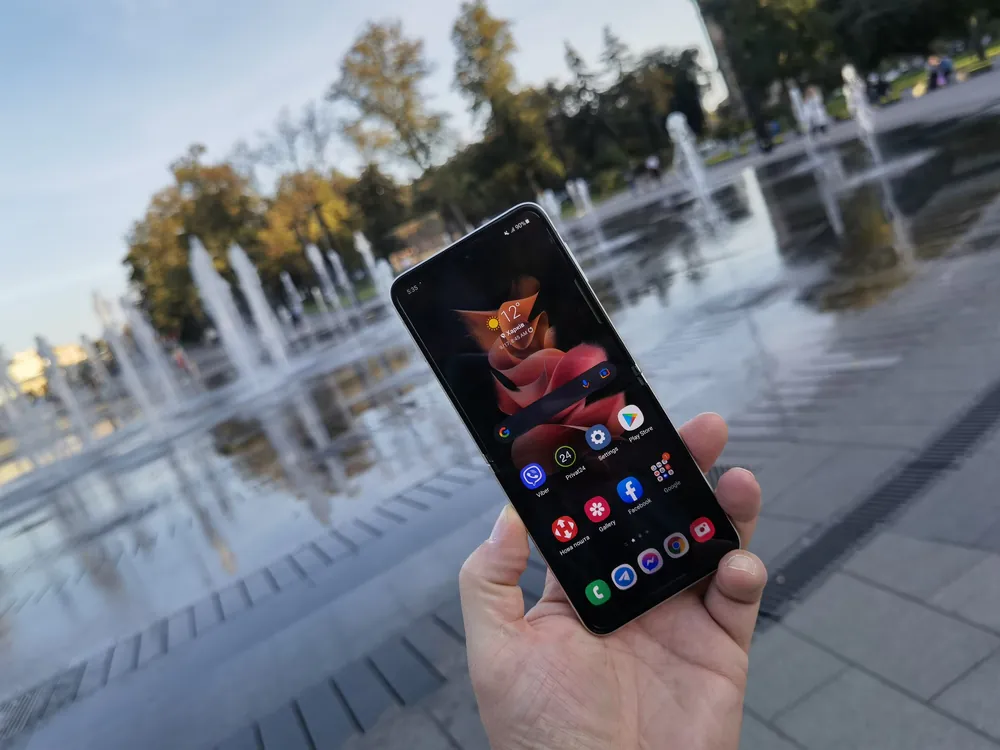
Conclusion on the second type of foldables: the FLIP smartphone can be folded in half and made smaller. And here I have the main question – WHY? You should ask yourself this question before buying. Do you need it? In general, this is the only “function in itself” that is related to the folding-unfolding feature of the smartphone in the Flip format.
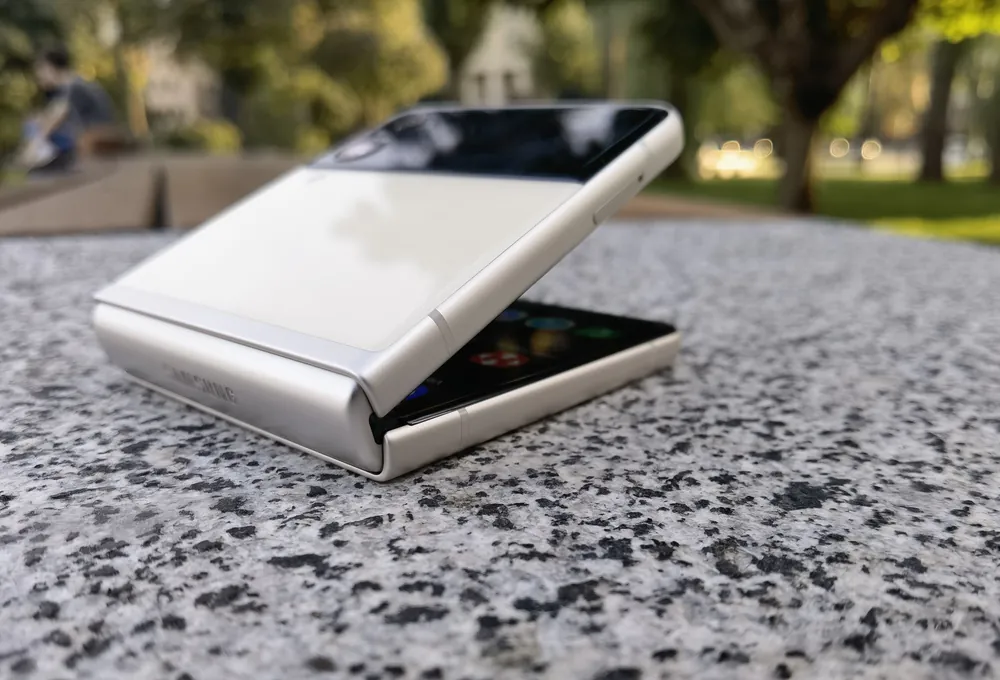
For some reason, it is believed that such a “smaller” smartphone is more convenient to carry in a pocket. But I do not completely agree with this statement. Yes, the smartphone becomes 2 times shorter, but also 2 times thicker. And it protrudes strongly from the pocket of tight-fitting clothes.
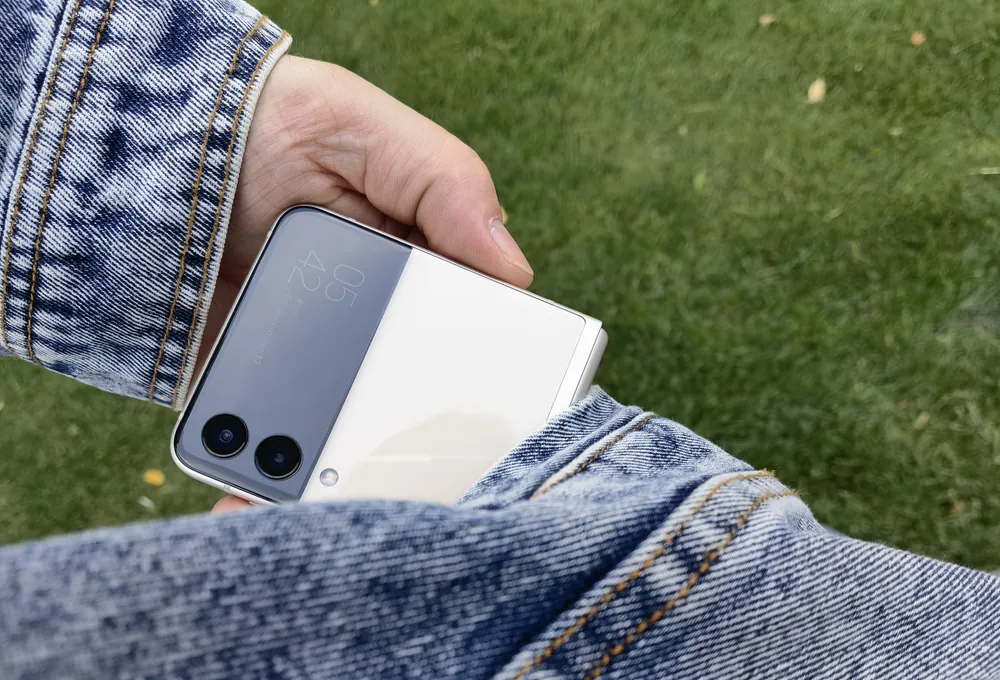
In terms of screen protection, I also don’t see any particular advantages, because the screen is flexible and it is almost impossible to break it, although you can crush it or damage it with a blow. But the glass back cover, or rather any of the two covers, can be broken when the gadget falls. In general, the Flip format smartphone does not become more protected when folded and, in my opinion, requires a cover when in active use.
Recommended reading:
- Samsung Galaxy Z Flip3 review: Better, cheaper, and… for everyone?
- Samsung Galaxy Z Flip review – Ultra-modern flagship flip phone
- Opinion: Why Samsung Galaxy Z Flip is better than Motorola RAZR 2019
Comparison of Samsung Galaxy Z Fold and Galaxy Z Flip
Image factor
I will be concise here. Both foldables will provide you with the highest level of points at this stage of the development of consumer culture. The moments of folding and unfolding of the smartphone attract the attention of others and strengthen your feeling of self-importance throughout the day. So, if the image component is the main motivation for you when buying a smartphone with a flexible screen, then any option will do.
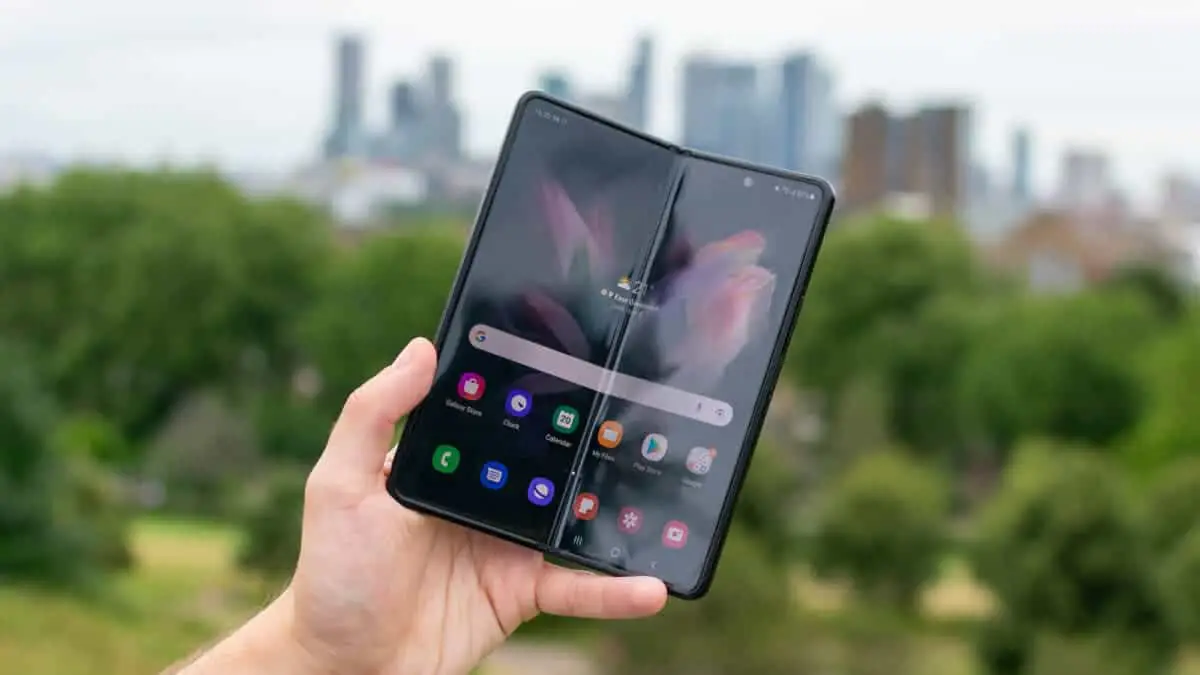
I’d assume that a smartphone like the Fold (associated with business, physically larger and heavier) will be more appealing for men, and the Flip foldable (fashionable color, associated with a small powder box that can be taken out of a woman’s purse) will be more appealing to women, but who am I to tell you, this is just my subjective conservative-sexist opinion.
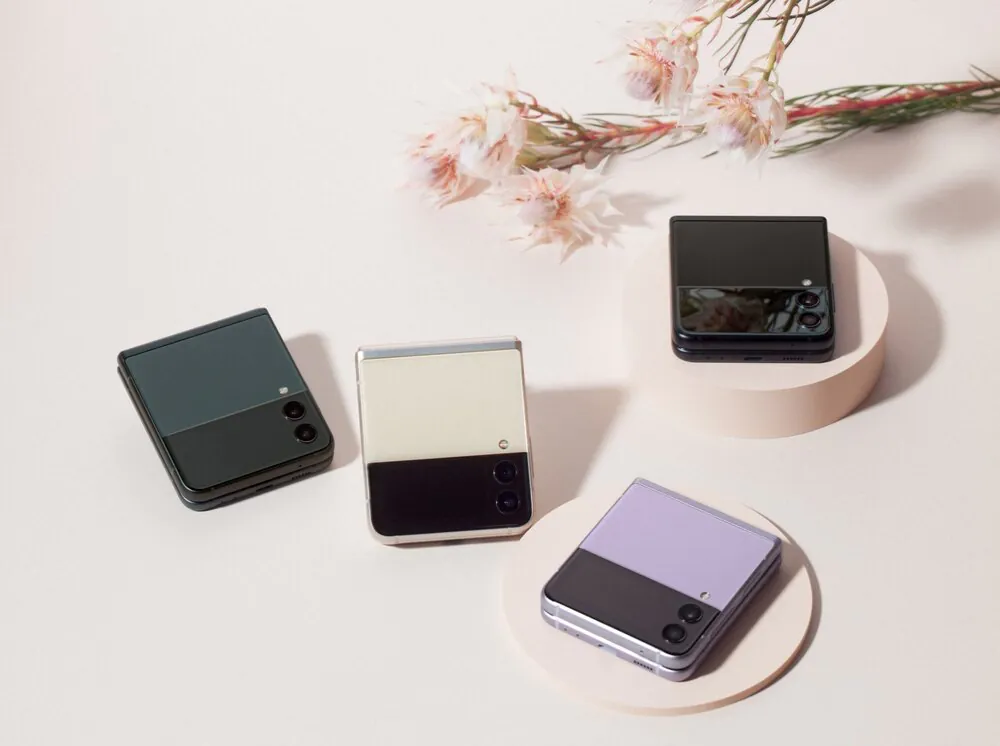
Read also: Samsung Galaxy S21 FE 5G review: Now definitely a fan flagship
Social Media & Websites
In this case, the Flip will not offer you any unique experience compared to the classic brick. Well, unless you can pull the feature of the elongated screen “by the ears” and say that it fits more posts/tweets in the feed and you will have to scroll less, although this is a rather silly statement (it depends a lot on the amount of text and the presence of pictures in the post). Well even if you save 10% of your thumb movement, is that really an advantage for you? I don’t think so.
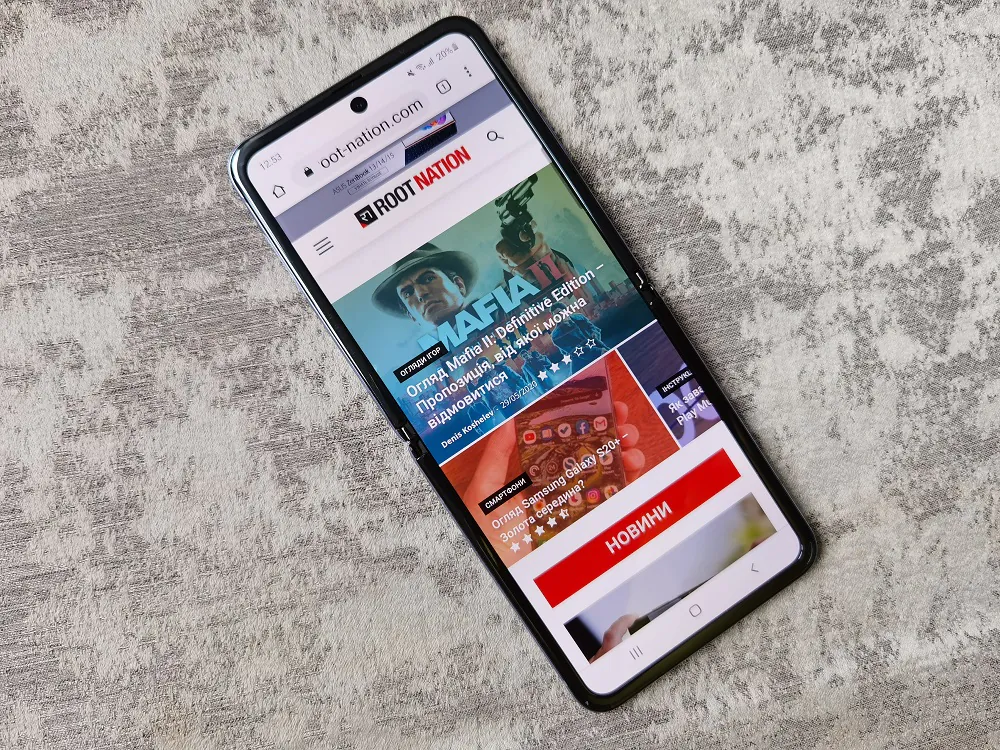
But using social network clients on the Fold tablet-sized display can be called by the fashionable word “spectacularity”. Yes, the process is really accompanied by increased “spectacularity”. The text is large and it is convenient and comfortable to read, and the pictures, which are so generously posted on modern social networks, have a spectacular look – they almost fit the entire screen, just like videos that are played automatically if you have the preview function turned on.
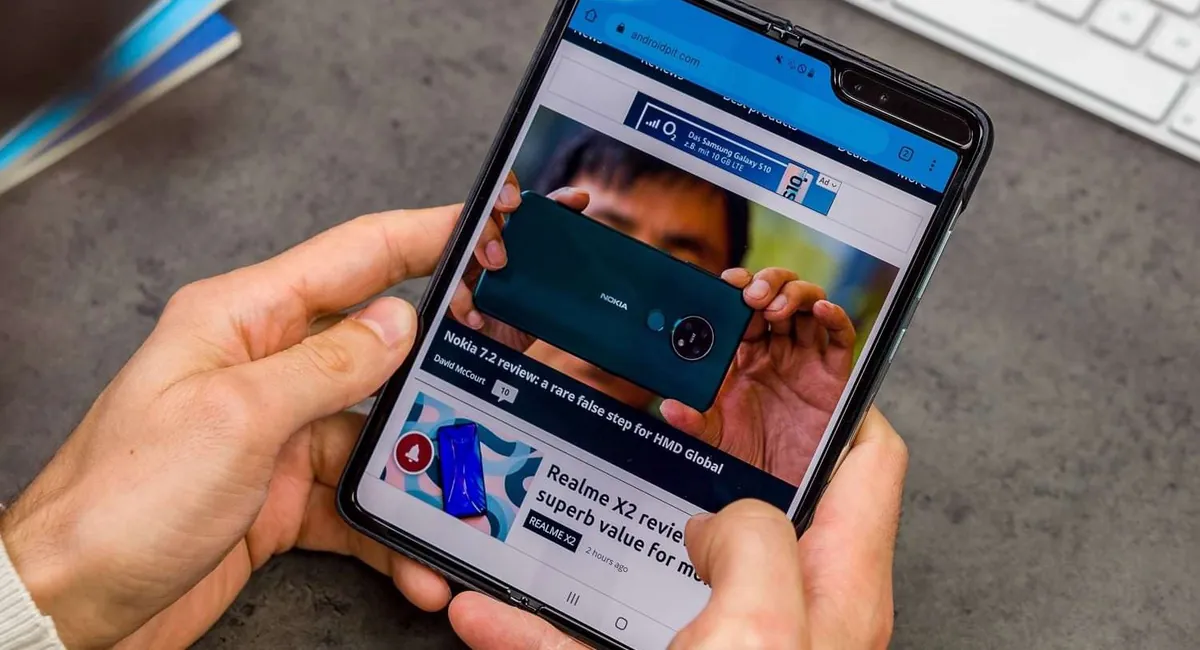
I am personally ready to sacrifice an increase in the number of screen scrolling movements for such beauty (this is inevitable because only one or one and a half posts fit on the screen). Moreover, most often you don’t even need to tap on the picture to open it in full screen – here you can see all the details in full. Therefore, there is a clear saving here. So, more scrolling, less stomping, in total, a certain balance of energy consumption of the human body is obtained. And indeed, we have an improved user experience when viewing social media feeds on a larger screen.
Read also: realme 9 Pro+ Review: Sturdy Middle with Curious Design
Watching Video
Both devices are poorly adapted for watching videos, however, video content, which is mostly generated by users and bloggers, has a 16:9 or 18:9 aspect ratio. On both smartphones, when watching such videos, we will get black bars – on the Flip along the edges, and the Fold above and below the video. But still, physically the picture will be bigger on the Fold. Therefore, conditionally, it is still a little more suitable for watching videos.
Read also: Xiaomi 12 Review: Flagship For Everyone
Content Creation and Professional Application
And here again, we will compare the use case of an ordinary smartphone with a small tablet, taking into account the fact that the large internal screen of the Fold supports an advanced stylus a la Galaxy Note. And this theoretically adds many use cases for designers, illustrators, engineers, businessmen, and other professionals.
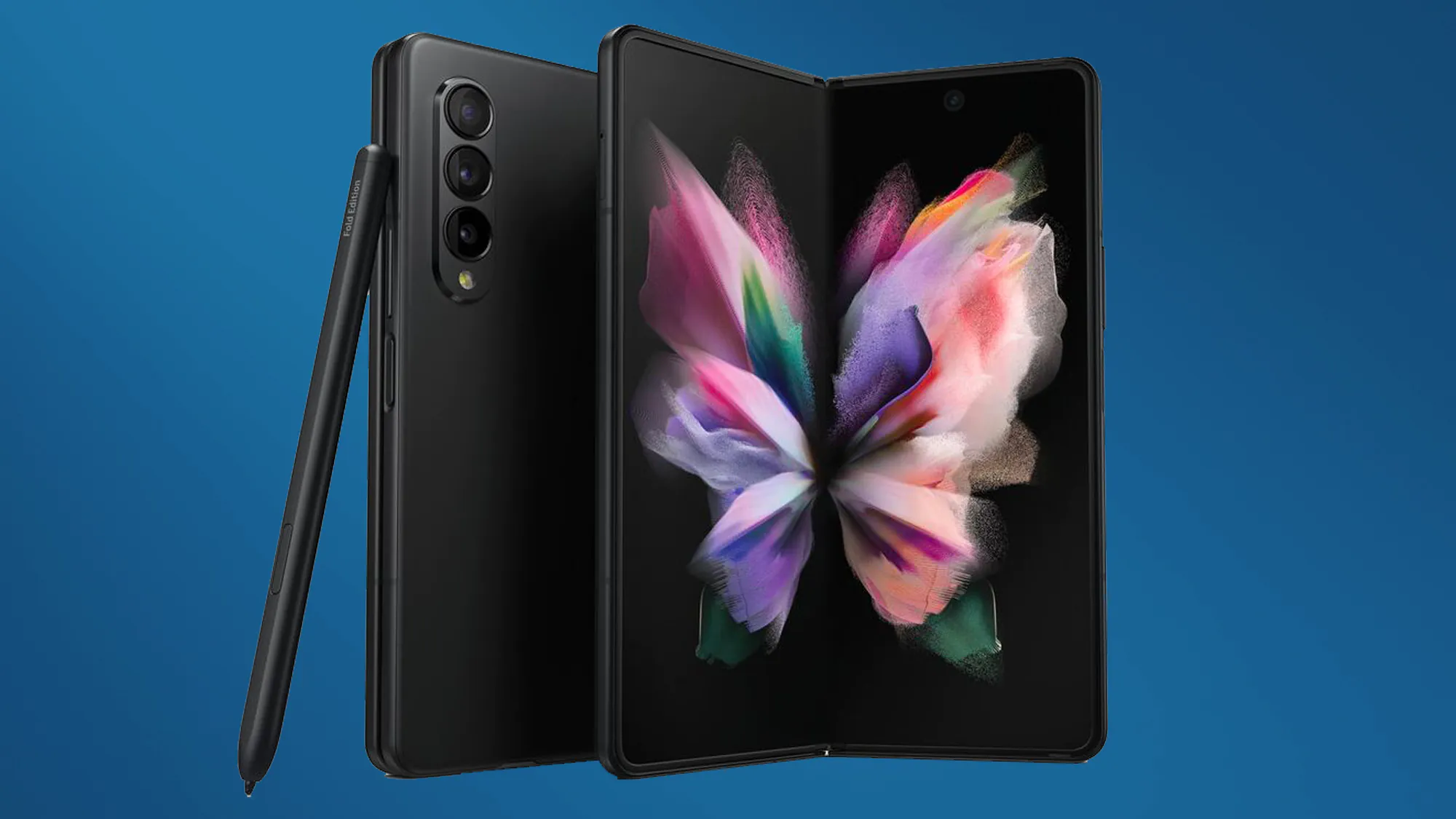
But the issue is: these functions are used by a small percentage of owners. It’s worth noting that Samsung effectively killed off the Galaxy Note series, leaving the stylus as an option for the top-tier model of the Galaxy S series. But maybe with a miniature tablet, the use of the S-Pen just looks more logical. I won’t judge, because even when I had several Galaxy Notes for personal use, I used the pen a few times for tests and to show off in front of friends, but no more. But still, if I want to, I can draw a chipmunk on my smartphone, how about you?
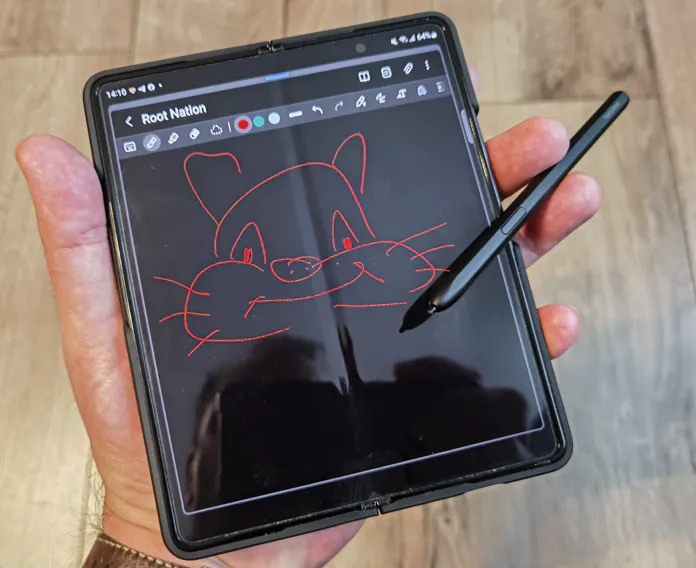
What else can be added to this section – office use of smartphones, that is, working with documents and tables, typing – in these tasks, a larger screen will undoubtedly give you more freedom of action. And Fold can be used as a micro-laptop.
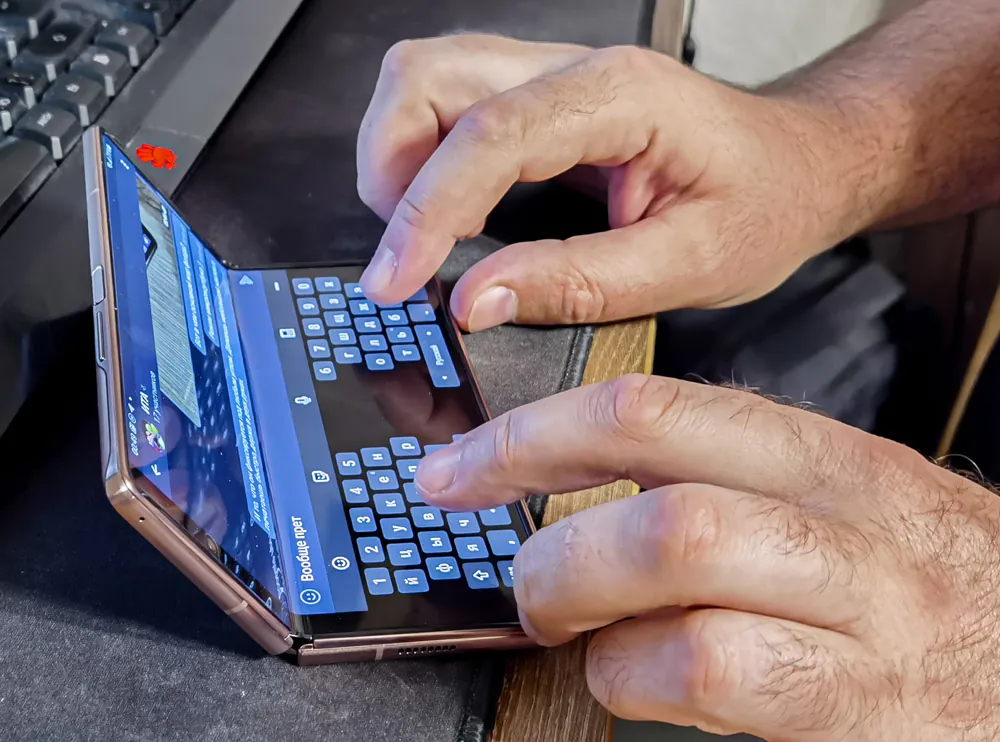
The small tablet is also better for creating mobile content, such as video editing for multimedia platforms like TikTok, YouTube, and photo editing for Instagram. A fairly large category of creators is engaged in such matters, so the option is quite a in demand and it continues to consistently gain popularity.
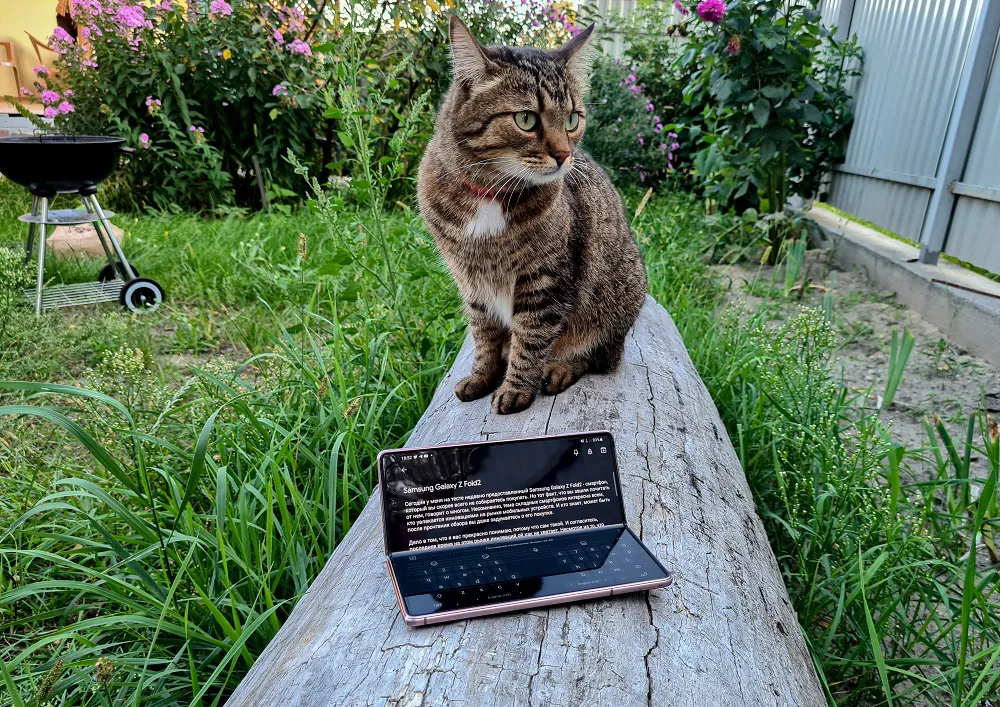
In conclusion, this section has a clear advantage of the Fold format. Although, if you do all of the above with success on a regular classic smartphone, then nothing prevents you from being just as successful with a sophisticated device like the Flip.
Read also: Motorola Moto G32 review: Balanced and affordable
Games
On this point, everything is simple and clear – playing is more pleasant and comfortable on a large screen, so Fold puts Flip on both shoulder blades before the sparring even started.

Multi-Window and Split Screen
This hyped feature is rarely used by anyone, and even more so – few people know about it among ordinary people, but still, let’s assume that you are the most progressive person who uses all the capabilities of smartphones to the fullest. And here everything is obvious – Fold once again “gives more” than Flip, about 2 times.
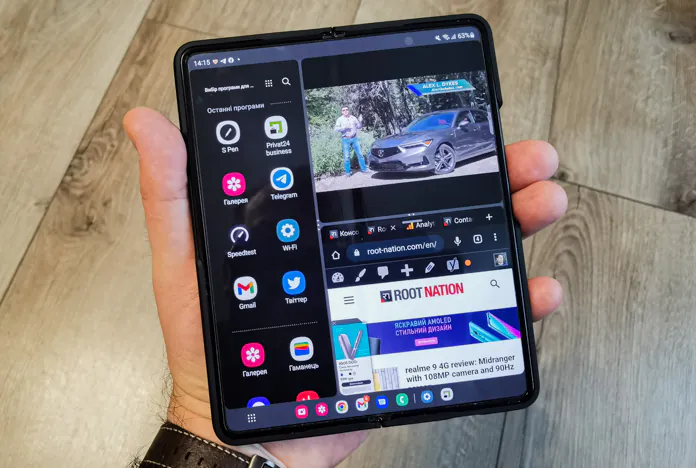
Roughly speaking, the Flip screen can only be divided in half, while the Fold – is into 2, 3, and 4 windows. Do you like to simultaneously read social networks, watch videos and browse the web, and all this on the go, using the navigator in the 4th window? Then this smartphone is for you! Although, no joke, multi-windowing helps a lot if you need to copy pieces of content from one document or web page and transfer them to a text editor. But I rarely do this on a smartphone. And you?
Read also: Huawei nova 10 Pro Review: Curved Screen, Super Cameras, And 100W Charging
Summary & Conclusions
If, after reading this text, you thought that I was going to persuade you to buy the Fold, then this is absolutely not in line with my intentions. Yes, the advantages of a folding micro tablet over a folding smartphone are obvious. The Fold is cooler than the Flip! Should we call a winner? But on the other hand, do you need all these features?
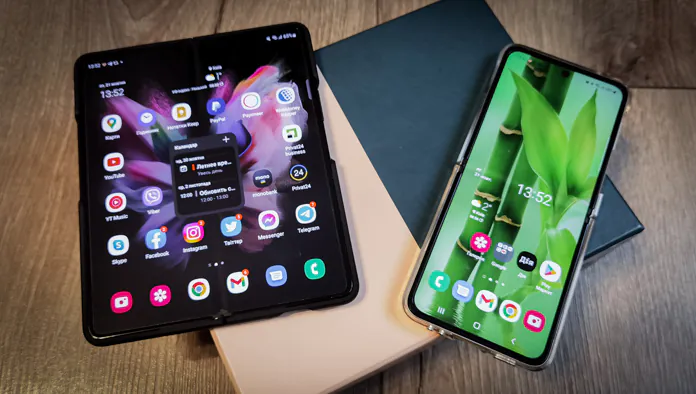
I will now make a feint with my ears, change my shoes in the air and say this. This is my main point. Chances are, you don’t need any of these smartphones. I concluded that in all life situations, an ordinary classic brick smartphone is more convenient for me.
Compared to the Flip… well, I don’t understand at all why I should spend seconds disassembling the smartphone to get the same brick, but only with a crease in the middle of the screen. Yes, it is inconspicuous and almost does not interfere, but still… My opinion is that such a complex form factor does not bring any real advantages to our lives. You can argue with me.
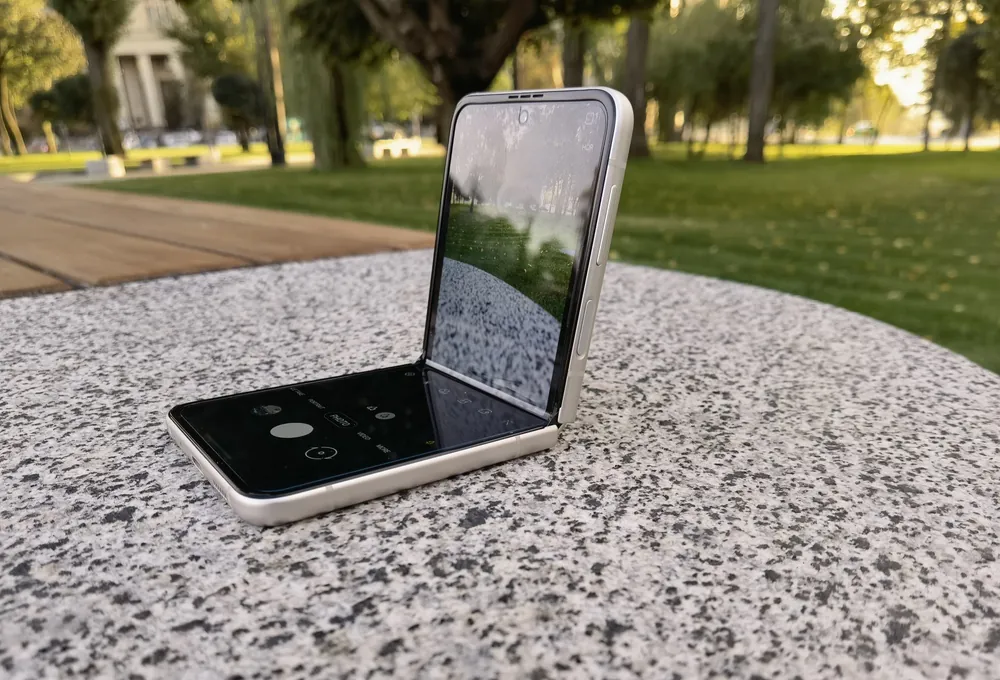
As for the Galaxy Fold, its main drawback for me personally is its bulkiness bordering on absurdity. The device is thick when folded and heavy as well. And the front screen has a rather strange format – narrow and long, besides, the content on it feels small. Especially when you are over 40 years old and have to strain your already weakened eyesight. Well, in general, if you are not all right with your eyesight, you may not like the front screen because of its “smallness”. On the 6.5-6.7″ screen of an ordinary large brick, any information has a much more comfortable look and is better perceived. And at the same time, it is usually still a compact and thin device that is convenient to carry in a pocket. So why torture yourself, especially considering the price?
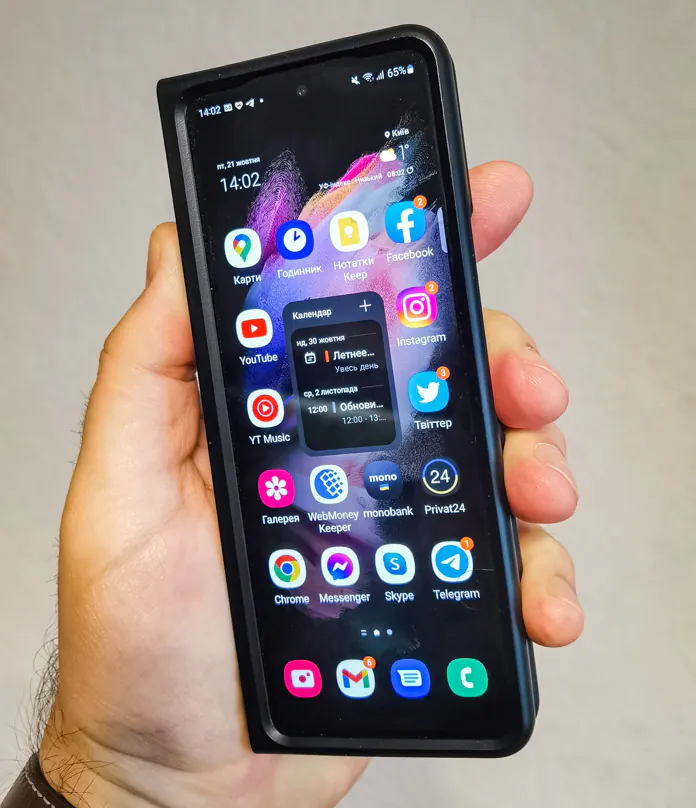
In the unfolded position, of course, the Fold is cool with the internal screen, even with the crease, you just get used to not noticing it. BUT THIS IS NOT A SMARTPHONE ANYMORE! And this is the main problem of the device. It is better to work with it in this form while sitting on a sofa or in a chair – at home or in transport, but not on the go. It should be held with two hands. Or hold with one hand and control with the other. In short, whatever you call it, the tablet is still a tablet, with all the consequences arising from the nuances of its use.
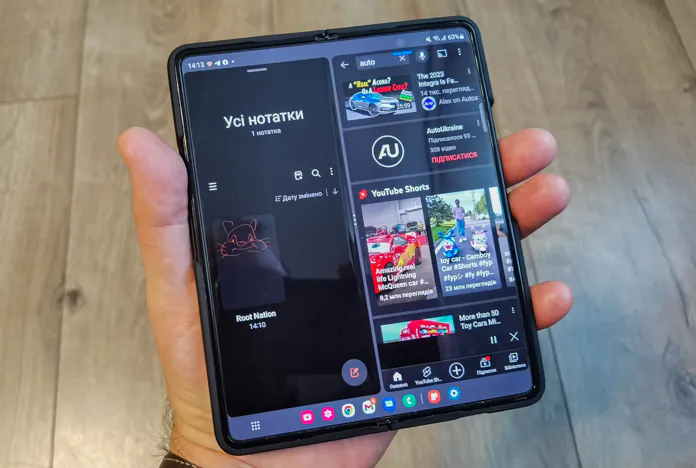
So, what’s the verdict? We are back to the stereotype that it is best to have a regular smartphone for mobile life and a tablet as a couch-bed device for reading and entertainment, as well as a large screen for commuting and traveling. But, if you already buy a tablet as a second device, then our hero has very serious competitors. Well, in general, the Fold has not become a convenient smartphone for me personally, and I’ve never had a tablet, and not because I cannot afford one. In addition, it’s just too expensive for a tablet.
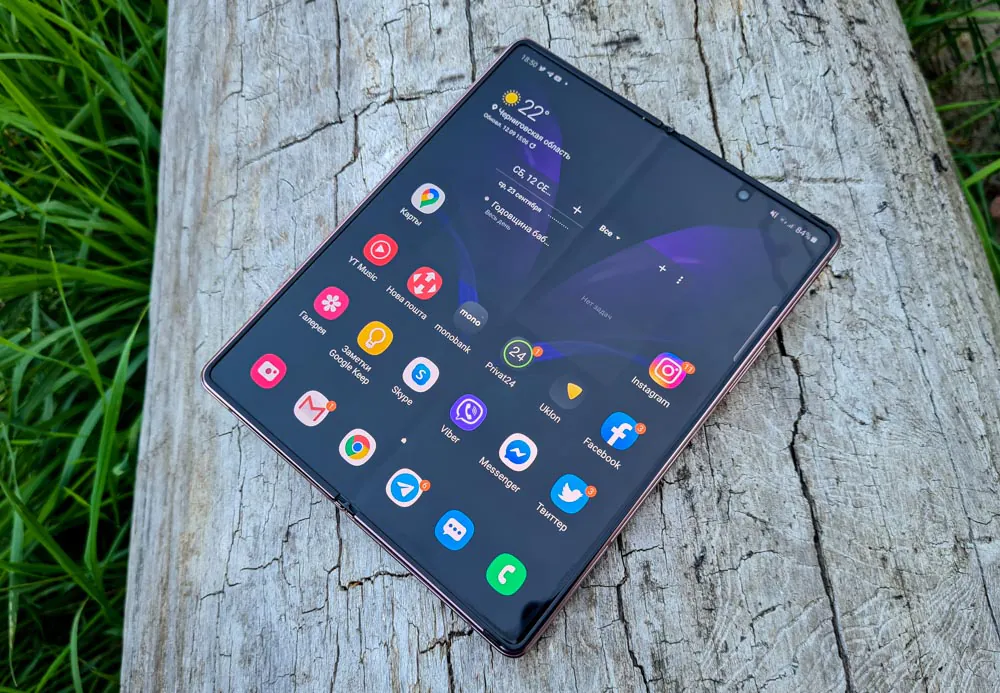
And yet, if you want something unusual and making a splash for you is better than cash, then any folding smartphone will bring fresh emotions to you and the people around you. Although it may not last long and you will soon realize that you need an ordinary human smartphone with one solid screen. In general, I have presented all my arguments in favor of each of the foldable types and described all the shortcomings. The choice is yours now!

